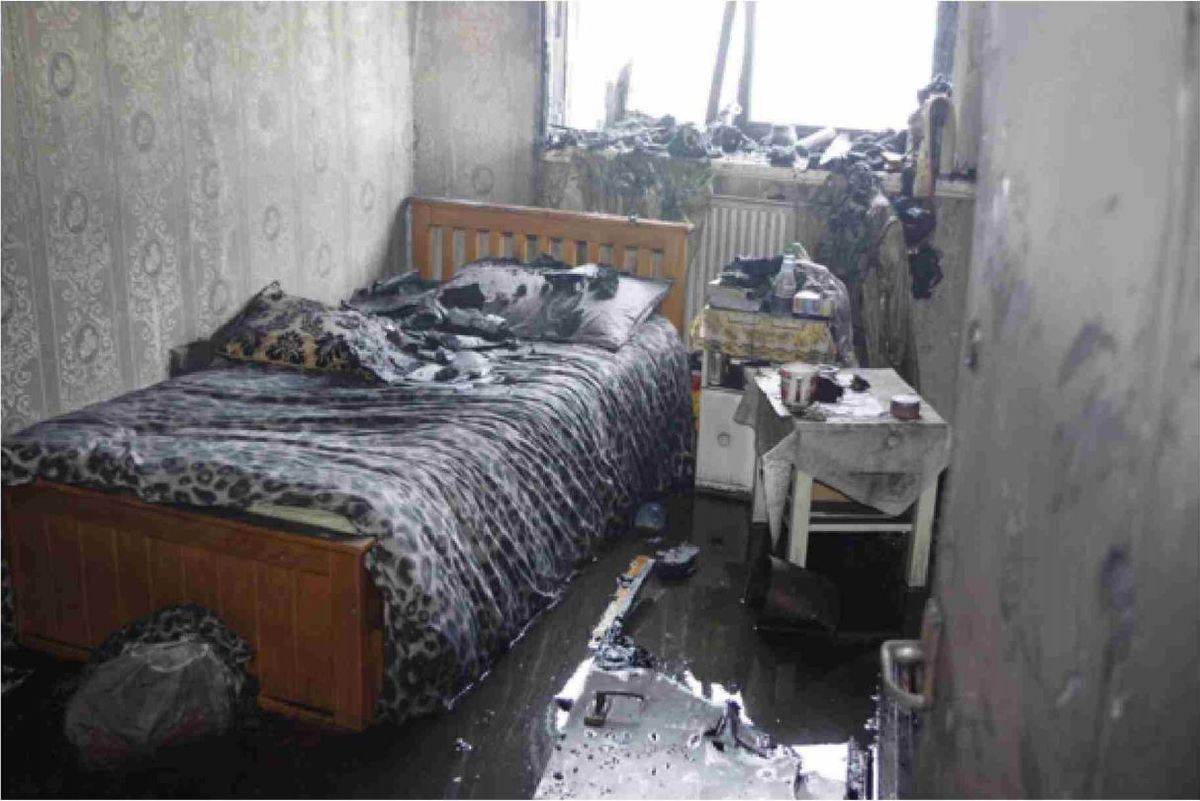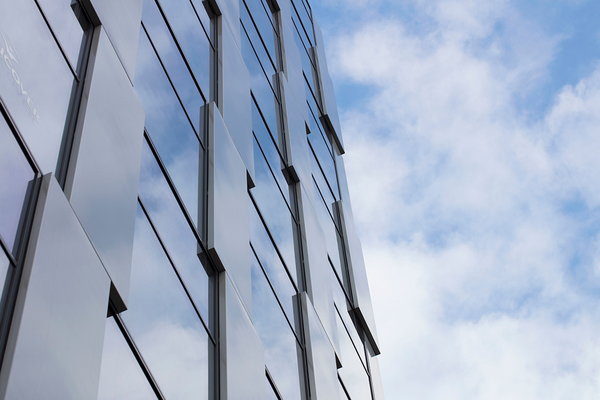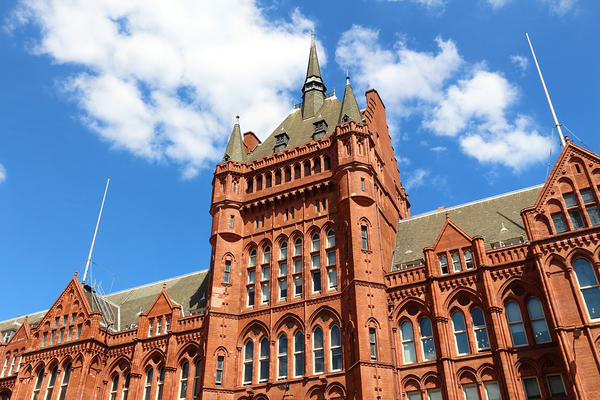You are viewing 1 of your 1 free articles
 Jules Birch
Jules BirchBasic assumptions on fighting fires were rendered invalid at Grenfell
The ‘stay put’ advice to Grenfell residents at the outbreak of the fire has been under intense scrutiny at the inquiry. Jules Birch examines the context of what has been described as a series of catastrophic failures
Yes it was the cladding, but expert reports for the public inquiry into the Grenfell Tower fire find multiple fire safety failures in the building, its refurbishment, management, in the wider regulatory system and construction industry.
The first thing that leaps out of the report by fire engineer Dr Barbara Lane, leader of fire safety engineering at Arup, is a timeline that shows that the conditions for ‘stay put’ advice to residents had “substantially failed” by 01:26 on the morning of the fire.
“Conditions for ‘stay put’ advice to residents had “substantially failed” by 01:26 on the morning of the fire.”
This was within half an hour of the fire breaking out in Flat 16 and the London Fire Brigade did not abandon stay put until 02:47.
Those conclusions have already made some of the headlines but Dr Lane makes clear that there is a deeper context for them.
The way that high-rise buildings are designed and the way that fires in them are fought rely on the fact that multi-storey external envelope fires are not meant to happen.
But the problems went beyond just the cladding, with “multiple catastrophic fire-spread routes” increasing the likelihood that fire would spread from a flat to the cavities in the cladding system.
So, the fire at Grenfell rendered invalid all of the basic assumptions about fighting fires from the inside and telling residents of other flats to stay inside because they will be protected by compartmentation.
“The fire at Grenfell rendered invalid all of the basic assumptions about fighting fires from the inside and telling residents of other flats to stay inside because they will be protected by compartmentation.”
That meant there had to be an improvised approach to fighting the fire from the outside on the night but most of the building was always going to out of reach even for aerial appliances – the whole reason why the risk of external fires should be designed out in the first place.
Dr Lane’s report is one of six published on the first day of the first phase of the hearings following the commemorations over the last two weeks, and all of them pose some fundamental questions about different aspects of fire safety in high-rise buildings and the regulatory regime that lies behind it.
Even before we get to questions of liability and culpability, they are yet another reminder of just how complex this inquiry is going to be.
Jules Birch, award-winning blogger
Dr Lane’s Grenfell Inquiry report in detail
Cladding and compartmentation failures
Fire safety relies on “defence in depth” or multiple levels of safety, meaning not just compartmentation but a whole range of other levels such as provision of firefighting equipment, fire doors, smoke control, ventilation of the staircase, fire alarms and active and passive fire protection systems. But once the fire spread they began to fail one by one.
As Dr Lane puts it: “The building envelope created an intolerable risk on the night of the fire, resulting in extreme harm. It did not adequately resist the spread of fire over the walls having regard to the height and use of the building. The active and passive fire protection measures within the tower were then required to mitigate an extraordinary event and, as a result, the consequences were catastrophic.”
“The building envelope created an intolerable risk on the night of the fire.”
She concludes, based on test evidence supplied to the inquiry, that the construction materials forming the rainscreen cladding system “did not comply with the recommended fire performance set out in the statutory guidance of [Approved Document] B 2013 for a building of that height”.
But the problems went beyond just the cladding, with “multiple catastrophic fire-spread routes” created by the construction form and detailing, and the arrangement of materials used around the old and new windows increasing the likelihood that fire would spread from a flat to the cavities in the cladding system.
Attempts had been made to subdivide the cavities but both the horizontal and vertical fire stopping were installed incorrectly, and “no evidence has been provided that they were ever tested for performance in an ACP [aluminium composite panels] based rainscreen cladding system of the type installed at Grenfell Tower”.
The windows did not have fire resisting cavity barriers and “these unprotected openings themselves were surrounded by combustible material”, meaning that there was a disproportionately high probability of a fire starting near a window spreading to the cladding.
The arrangement and type of construction materials in the cladding system then stretched the rest of the fire safety system to breaking point with multiple internal fires, large amounts of smoke, an early need for external firefighting and a need to change the evacuation strategy.
She finds that the cladding system was “therefore non-compliant with the functional requirement of the building regulations” but all of that had severe knock-on effects for the firefighting operation with the fire brigade never told that there was a combustible cladding system.
“I have found no evidence yet that any member of the design team or the construction team ascertained the fire performance of the rainscreen cladding system materials, nor understood how the assembly performed in fire.”
In one of the most damning sections of the entire report she says: “I have found no evidence yet that any member of the design team or the construction team ascertained the fire performance of the rainscreen cladding system materials, nor understood how the assembly performed in fire. I have found no evidence that Building Control were either informed or understood how the assembly would perform in a fire.
"Further, I have found no evidence that the Tenant Management Organisation risk assessment recorded the fire performance of the rainscreen cladding system, nor have I found evidence that the London Fire Brigade risk assessment recorded the fire performance of the rainscreen cladding system.”
Stay put advice failure
Dr Lane says she is particularly concerned about the delay between 02:06, when a major incident was declared, and 02:47 when the advice was changed.
However, she points out that there is no requirement in the UK for automatic detection and alarm systems in high-rise buildings and no way to raise an all-out alarm in Grenfell Tower or to communicate with vulnerable residents.
As the report makes clear, Grenfell went through an extensive refurbishment between 2012 and 2016, including not just the cladding but also full internal refurbishment of the first three storeys, work on the building services on every floor and in every flat, replacement of all the fire doors and gas supply works.
The problems with the fire doors are now well known. The report says that the installed doors had different metal fittings and intumescent seals, which could have affected their performance and some were glazed and could have failed prematurely.
Dr Lane concludes that “all the flat entrance doors (from Level 4-23) were non-compliant with the fire test evidence relied on at the time of the installation” and that this non-compliance “would have contributed to the failure to prevent the spread of fire and hot smoke from the fire to the lobby.”
“There were further failures of the ventilation system that was meant to extract smoke from the lobbies and of the fire lift, with the fire brigade unable to take control.”
There were further failures of the ventilation system that was meant to extract smoke from the lobbies and of the fire lift, with the fire brigade unable to take control.
Grenfell also had a dry fire main rather than a wet one, making it non-compliant with design guidance at the time of the original construction and with current standards.
A wet main would have enabled a faster response to the original fire and enabled greater water pressure but it even they are not designed for the multiple hoses needed.
That non-compliance contributed to a failure to prevent the spread of fire and hot smoke from the flat to the lobby.
Conclusions
Overall, Dr Lane finds that “the number of non-compliances signify a culture of non-compliance at Grenfell Tower. I am particularly concerned about the maintenance regime of the active and passive fire protection measures. I note that multiple automatic systems such as the control of the fire lift and the smoke ventilation system, appear not to have operated as required.”
That and other issues such as the gas installation will be covered in Phase 2 of her report. In the meantime, though, she recommends action on:
- Cladding – she says the remains concerned that some “limited combustibility” materials may not be adequate and that full scale testing should be carried out of cladding systems including windows and fixtures and fittings that would help establish whether materials need to be non-combustible in high-rise buildings.
She adds that: “I have found no evidence so far that there was any understanding by any member of the design team or construction team, nor by the approving authority, that the rainscreen cladding system was either combustible or in breach of the building regulations.” - The testing and classification regime – she found “no relevant test evidence” for the cladding, fire doors not in compliance with test evidence provided and no evidence this was understood by professionals or fire safety managers.
She adds that it is essential that there is proper understanding of test evidence and how it relates to performance. “This is a critical change which is needed throughout the design and construction industry”. - Standards and regulations – how to treat ‘filler material’ in cladding systems will be a crucial issue for the inquiry and potentially for future liability but Dr Lane highlights a complex and confusing array of national and European standards and guidance.
The Grenfell Tower Inquiry
Closing statements
Day 85: victims' lawyers attack the fire brigade
Further expert evidence
Including some additional evidence from emergency call handlers, bereaved and relatives
Day 84: further evidence from survivors and relatives
Day 83: swift evacuation of tower possible if residents alerted
Day 82: initial fire was extinguished but then returned to the flat
Day 81: overheating fridge-freezer most likely cause of fire
Day 80: fire doors installed did not match product tested
Day 79: resident advised to stay put despite fire in flat
Day 78: insulation and cladding material below required standard
Day 77: molten plastic spread blaze down tower
Day 76: 'stay put' should be dropped when fire spreads across floors
Other witness evidence
Police, ambulance, gas suppliers, council, TMO and call room operators give evidence
Day 75: call room operators give evidence
Day 74: further evidence from TMO officers
Day 73: TMO boss failed to pass information to firefighters
Day 72: fire finally extinguished when gas switched off
Day 71: further questions over stay put advice
Day 70: the police evidence
The bereaved, survivors and relatives’ evidence
Day 69: video shows smoke billowing through fire door
Day 68: KCTMO removed self closing mechanism and never replaced it
Day 67: gaps in cladding fixed with duct tape
Day 66: 'don't fix broken system with a sticking plaster'
Day 65: survivor dragged disabled man down nine floors to safety
Day 64: KCTMO 'did not replace broken fire door'
Day 63: foam insulation inside cladding 'exposed' says survivor
Day 62: father gives harrowing account of son's death
Day 61: council’s management organisation slammed for faulty electrics
Day 60: stay put advice ‘led to deaths’, residents say
Day 59: residents describe problems with new windows
Day 58: survivor describes how daughter saved his life
Day 57: firefighter evidence ‘a slap in the face’, says survivor
Day 56: relations with contractor were ‘toxic’
Day 55: resident 'never happy' with stay-put advice
Day 54: tenant gives evidence about housing association
Day 53: stay put advice 'felt like trap'
Day 52: resident saved by son's phone call
The firefighters’ evidence
Day 51: firefighter feared encouraging residents to jump
Day 50: the LFB commissioner
Day 49: fire chief reveals frustration over lack of building plans
Day 48: internal fire spread 'bigger story' than cladding
Day 47: fire officer considered evacuating crews over building collapse fears
Day 46: 'we were improvising' senior firefighter admits
Day 45: firefighter urged for abandonment of 'stay put' policy
Day 44: firefighter recalls radio signal difficulties
Day 43: call hander 'uncomfortable' with insisting residents stay put
Day 42: residents only told to leave if they called fire brigade back
Day 41: breathing equipment delay 'hampered rescues on upper floors'
Day 40: chiefs told firefighters to abandon policy
Day 39: firefighters reveal dramatic rescue of children
Day 38: firefighters issue aplogies to families
Day 37: council 'unable to provide tower plans'
Day 36: QC defends inquiry process
Day 35: Javid would welcome interim recommendations
Day 34: water from hose 'too weak' to reach the flames
Day 33: 'oh my god, we've been telling people to stay put'
Day 32: further fire fighter describes lack of equipment and low water pressure
Day 31: 'incredibly difficult' task of recording information outlined
Day 30: struggle to maintain control over rescue operation described
Day 29: fire service 'overwhelmed' by survival guidance calls
Day 28: 'the building beat us'
Day 27: firefighters 'forced to abandon plans to reach roof'
Day 26: poor signage hindered rescue efforts
Day 25: water pressure left firefighting equipment 'like garden hose'
Day 24: decision to abandon 'stay put' explored
Day 23: TV images 'could have assissted' rescue effort
Day 22: description of hectic scenes in the control centre
Day 21: account from the fire service 'nerve centre'
Day 20: firefighter describes 'huge volume' of calls from trapped residents
Day 19: firefighter 'given no training on cladding fires'
Day 18: evacuation would have been 'huge catastrophe'
Day 17: firefighters describe access and lift issues
Day 16: scenes of carnage likened to 9/11
Day 15: firefighters recount trauma of survival guidance calls
Day 14: firefighters describe spread of blaze
Day 13: firefighters recall radio difficulties
Day 12: "it was like a war zone"
Day 11: questions raised over fire fighters' radios
Day 10: watch manager emotional under questioning
Day nine: lead firefighter 'not trained in stay put policy'
The expert reports: authors give evidence to inquiry
Day eight: where the fire started
Day seven: what was in the cladding?
Day six: the cause and spread of the fire
Day five: expert highlights key issues
Day four: firefighters defend response to fire
Day three: council and contractors appear for the first time
Day two: lawyers for the survivors make their case
Day one: expert evidence released on cladding and stay put
The commemoration hearings
30 May: Grenfell Council 'recognised it should not house disabled victim above four storeys'
29 May: Anger on day six of the Grenfell Inquiry
25 May: Grenfell families 'forced to live in chimney with stay put policy'
24 May: Grenfell family complained about father being housed on 17th floor
23 May: Tributes to children on third day of Grenfell hearings
22 May: Emotions run high as Grenfell bereaved shown footage of the tower burning
21 May: Grenfell victims share tributes as inquiry opens












